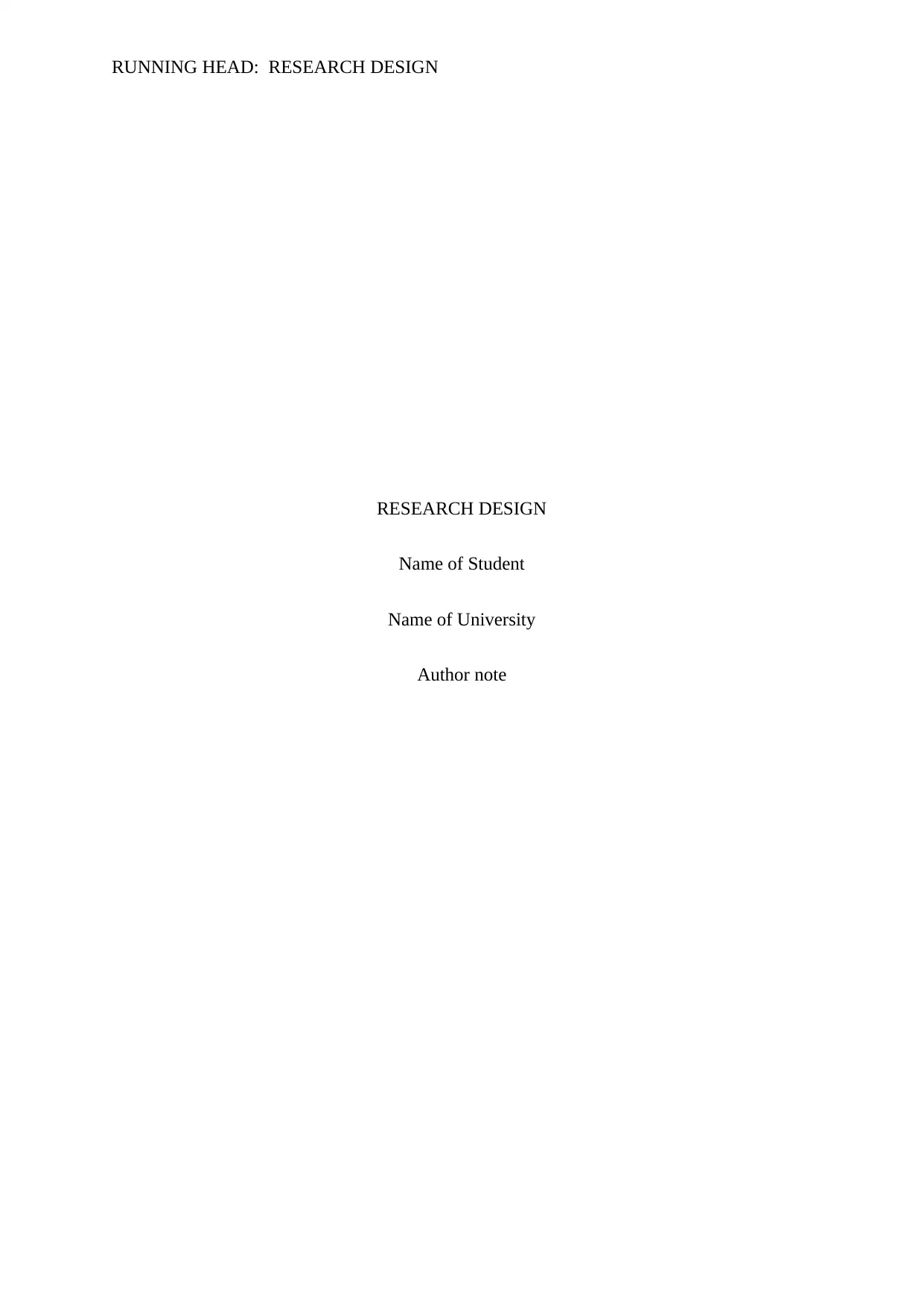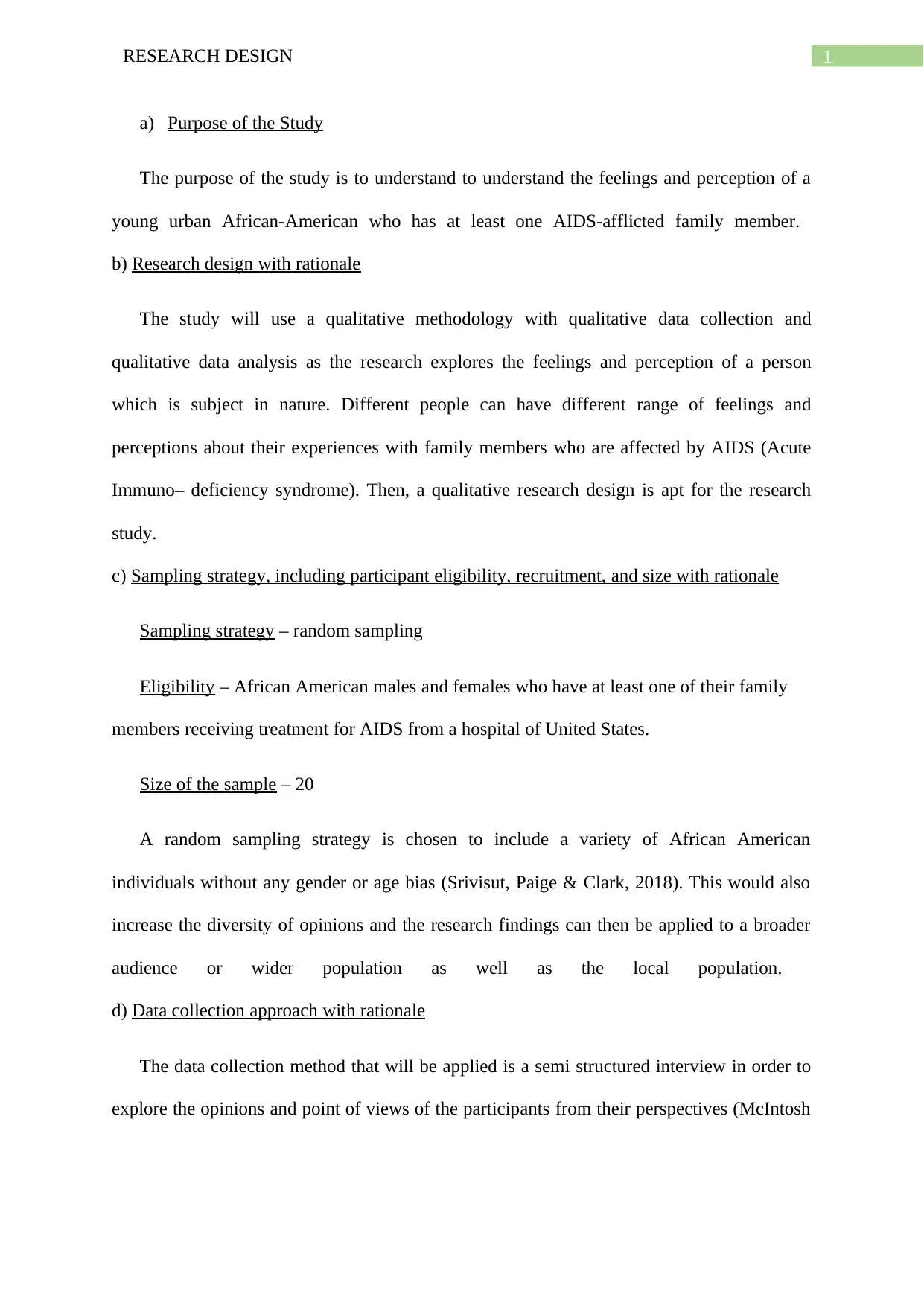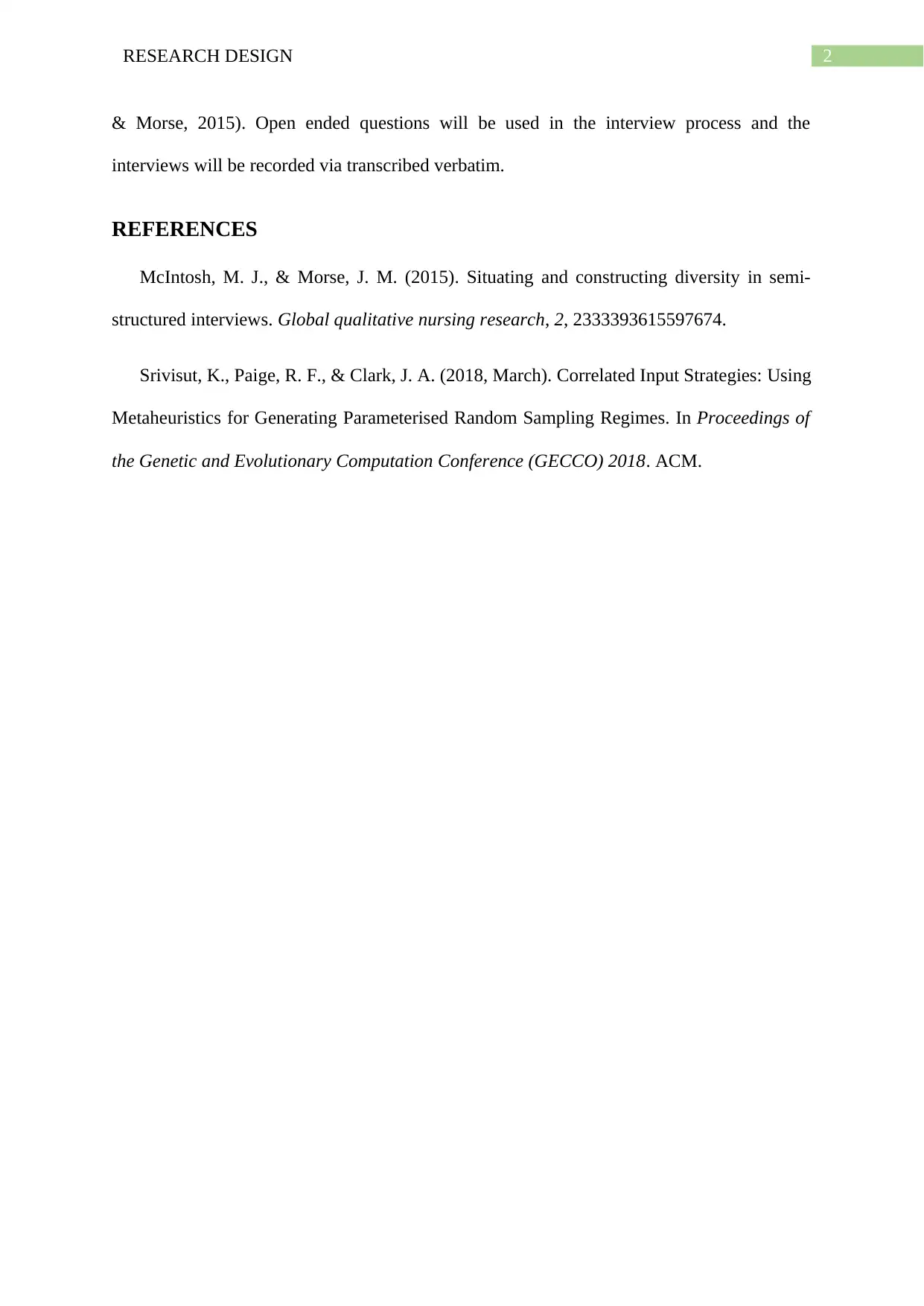Research Design: Study on AIDS and African-American Family Dynamics
VerifiedAdded on 2022/09/11
|3
|392
|28
Report
AI Summary
This report details a research design aimed at understanding the experiences of African-American families affected by AIDS. The study employs a qualitative methodology, focusing on the feelings and perceptions of individuals with family members impacted by the disease. A semi-structured interview approach is used for data collection, allowing for open-ended questions and in-depth exploration of participant viewpoints. The sampling strategy involves random sampling of African-American individuals, ensuring a diverse representation of opinions. The rationale behind the design emphasizes the subjective nature of the experiences and the need for a flexible data collection method to capture the nuances of individual experiences. The report also includes details about the sampling strategy and data collection methods. This approach enables a comprehensive understanding of the complex impact of AIDS on African-American families.
1 out of 3









![[object Object]](/_next/static/media/star-bottom.7253800d.svg)